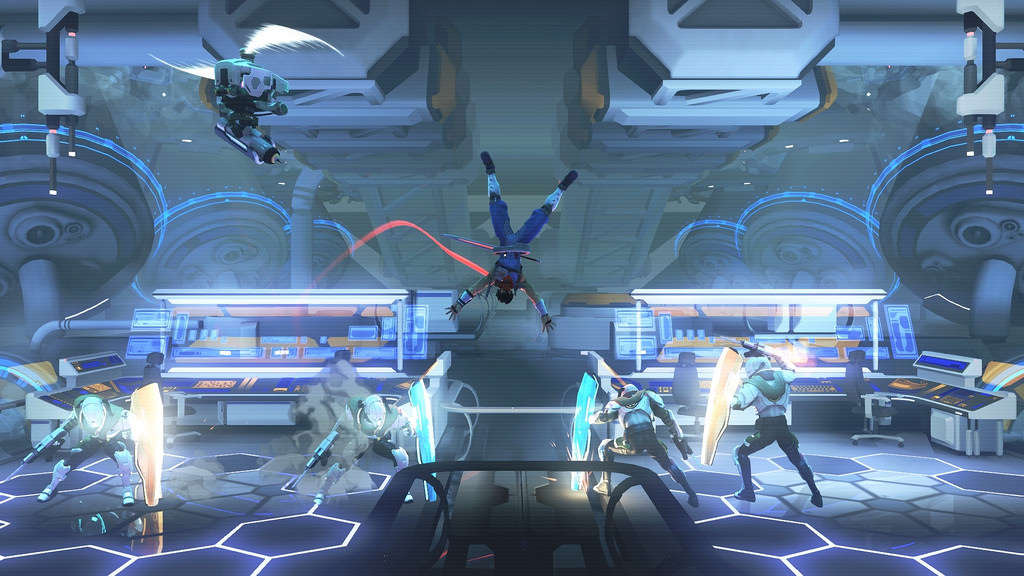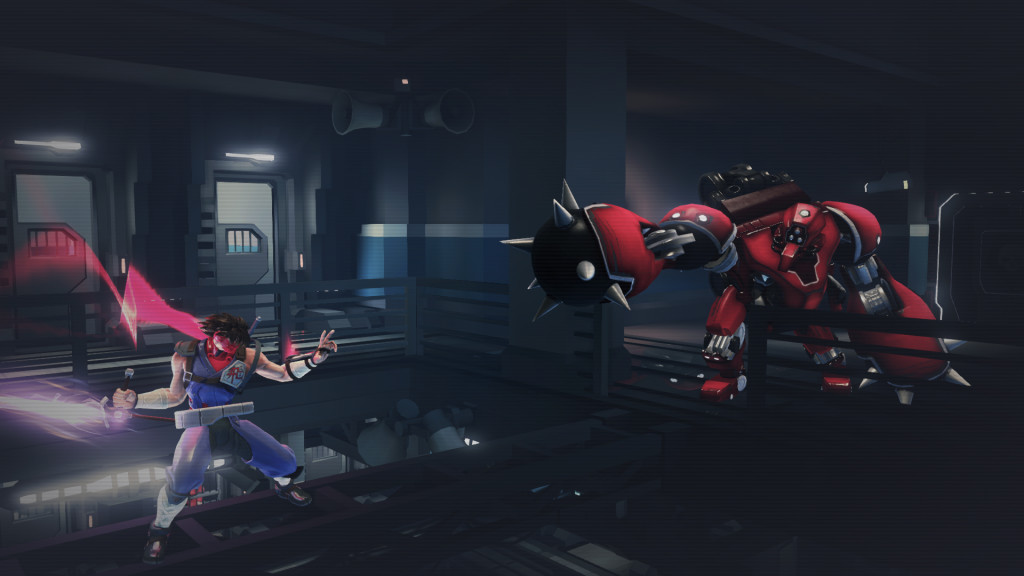Note: Part of this review was cribbed from the 12 Days of Christmas feature. It makes no sense to waste perfectly good material though, so I’ve added more than enough to make this a full-fledged review. Enjoy!
And He who sits on the throne said, “Behold, I am making all things new.
I like when franchises and great ideas end up reborn in a new form for a different audience. You hope they retain the essence of the original, while also offering something new to the process. Strider returned in 2014 to…well, not excite most people a whole lot. But excite me a whole lot! Reboots are tricky, but I think this one works surprisingly well. Whether by happy accident or otherwise, I actually liked a video game series reboot from 2014.
I was one of those unfortunate souls that had the opportunity to purchase Strider and Strider 2 many times, yet somehow always failing to make the leap. That surprises me! Strider remains one of Capcom’s seminal arcade releases, literally becoming a selling point for the arcade port-heavy Genesis in the 16-bit console wars. And yet, I never actually played a Strider game until Double Helix’ recent Strider reboot. I’m sure series purists will say that it sullies the series formula, but Strider 2014 gave me the most wonderful four hours of callous-creating Metroidvania fun I’ve had in a long time.
Part of it comes from the absolutely perfect use of the Metroidvania formula as a supplement to Strider’s main appeal, and not the focus.. The maps themselves simply reveal where you need to go and also where to use particular abilities to get stuff. There’s literally no mystery or exploration as to your objective; the game is deceptive linear, and all the better for it. Copying that style proves perilous for many studios, adding the illusion of depth while also ruining the game in the process. Strider does not, thankfully, add abilities for no apparent reason; every travel ability also functions as a combat ability, which goes a long way towards making jump upgrades much more exciting. Nothing feels wasted; this is a taut, focused game really designed for fast-paced platforming combat, and the large maps don’t get in the way. Most areas look like arenas (and heck, there are even arenas!) for fighting, and the platforming sections look like platforming. Both emphasize speed above all else.
If anything, Strider has always been about fast pacing. You are a sort of future ninja, and in video games ninjas do not often hide and sneak. They slice through any and everything in their path to obtain their objectives. What Strider does differently is its eight-way directional slicing (a step up from previous games in the series) and stellar platforming. If you play proficiently enough, you never stop moving, and there’s something about the driving forward momentum that just clicks in your brain after a while. Since every combat abilities doubles as a key of some kind, from actual keys to propelling Strider Hiryu through the air like a rocket, you can theoretically never stop moving (or, at least, it makes you feel like you never stop moving). The flow sets in, and you literally carve a path through robots, ninjas, monkeys, birds, and who knows what else in your Saturday morning cartoon quest to defeat the evil Meio and his empire.

Strider wants you to maintain that flow feeling; enemies exist to break your flow. Thus, you must find out how to destroy them in the most efficient way possible. Foes eventually come from all directions in giant groups, so you must multitask and perform (often while jumping over perilous chasms). Mostly it comes down to using your gained abilities in the right way. Like Guacamelee, enemies often contain color coding so you can recognize what Cypher modification (selected via the d-pad) works best. You can remove shields with orange augmentation, reflect projectiles with red, attack from afar with purple, and freeze certain foes with blue. All of them come in handy, but since you can freely switch between them, tactics jump on the fly depending on the enemy waves. Add various movement options, like slide attack, rocket shots, animal companions, and charge attacks (my absolute favorite), and you will struggle to integrate all of these options together. It’s a lot to juggle, but incredibly satisfying when you do.
Usually I try my best to skip to the end of such games, but Strider had me reveling in the combat mechanics. They work so well, I went out of my way to find items just to fight more enemies. That’s not to mention the boss fights, which follow the old “find out the pattern” model to the letter; each of them present new challenges to your arsenal that you need to think about quite intently to beat. Unfortunately, the game itself never presents a stiff enough challenge to take advantage of its bosses.That’s why I get to play on Hard mode now, which makes me happy!
Capcom’s reboot merely affixes a formula more palatable to the modern video game audience. The controls and pacing, from my experience, recreate that same sense of flow and speed, but now they add an exploration element to the proceedings. Most of the time, the game tells you where you need to go in the most explicit terms, but exploring yields health, energy, and damage upgrades that you’ll probably want. Even so, the upgrades don’t seem all that necessary. The game rewards you with new abilities and attacks rather than statistics boosts and upgrades, and the number of weapons (even the Ourobouros returns!) is definitely atypical for a platformer like this. I especially like the projectile reflection Plasma, which rewards good timing against ranged enemies.
I guess this makes Strder primarily a game of fun, classic action-game skill except for one minor detail: it just isn’t that hard. As per the Metroidvania designation, you end up making the game substantially easier just via exploration and finding upgrades, unintentionally or not. You, obviously, should feel more powerful, but sometimes you just rip through the game at an amazing clip without thinking about it. Honestly, I think I would prefer a “no health upgrade” run or something to that affect, because as it stands the game just gives you far too many chances to succeed. Even platforming suffers because there’s literally no risk or incentive to jump well – you revive a few feet away with a smidgen of life taken away. That’s just not right, I tell you! Even Hard Mode does little to solve this at all, although the challenge and score attack modes alleviate this somewhat. It’s enough to lament a change from Strider’s arcade roots, and enough to make Strider less than perfect.
Still, there are few games which really capture “retro” without just being a graphical facsimile of one, but Strider hits the nail on the head. Like Christ when he returns, Strider’s 2014 venture made everything new, and yet kept the same spirit under the hood. It doesn’t feel diluted, or wrong, or any number of other problems it could have encountered; rather, it feels reborn after a long time of thinking how to revive a classic video game character. And I think we can say the same for the Christian life: God does not replace or redefine you, but He does improve you, as He will everything.
21 Then I saw a new heaven and a new earth; for the first heaven and the first earth passed away, and there is no longer any sea. 2 And I saw the holy city, new Jerusalem, coming down out of heaven from God, made ready as a bride adorned for her husband. 3 And I heard a loud voice from the throne, saying, “Behold, the tabernacle of God is among men, and He will [a]dwell among them, and they shall be His people, and God Himself will be among them[b], 4 and He will wipe away every tear from their eyes; and there will no longer be any death; there will no longer be any mourning, or crying, or pain;the first things have passed away.”

